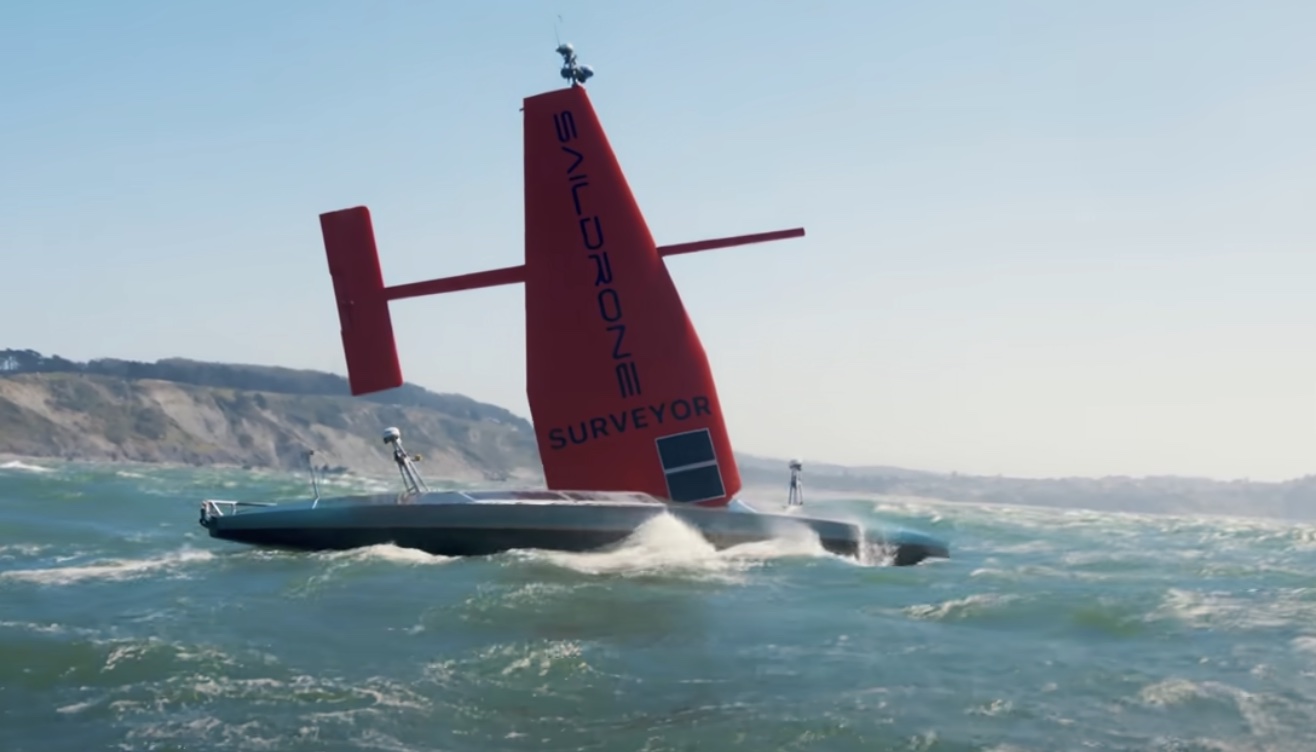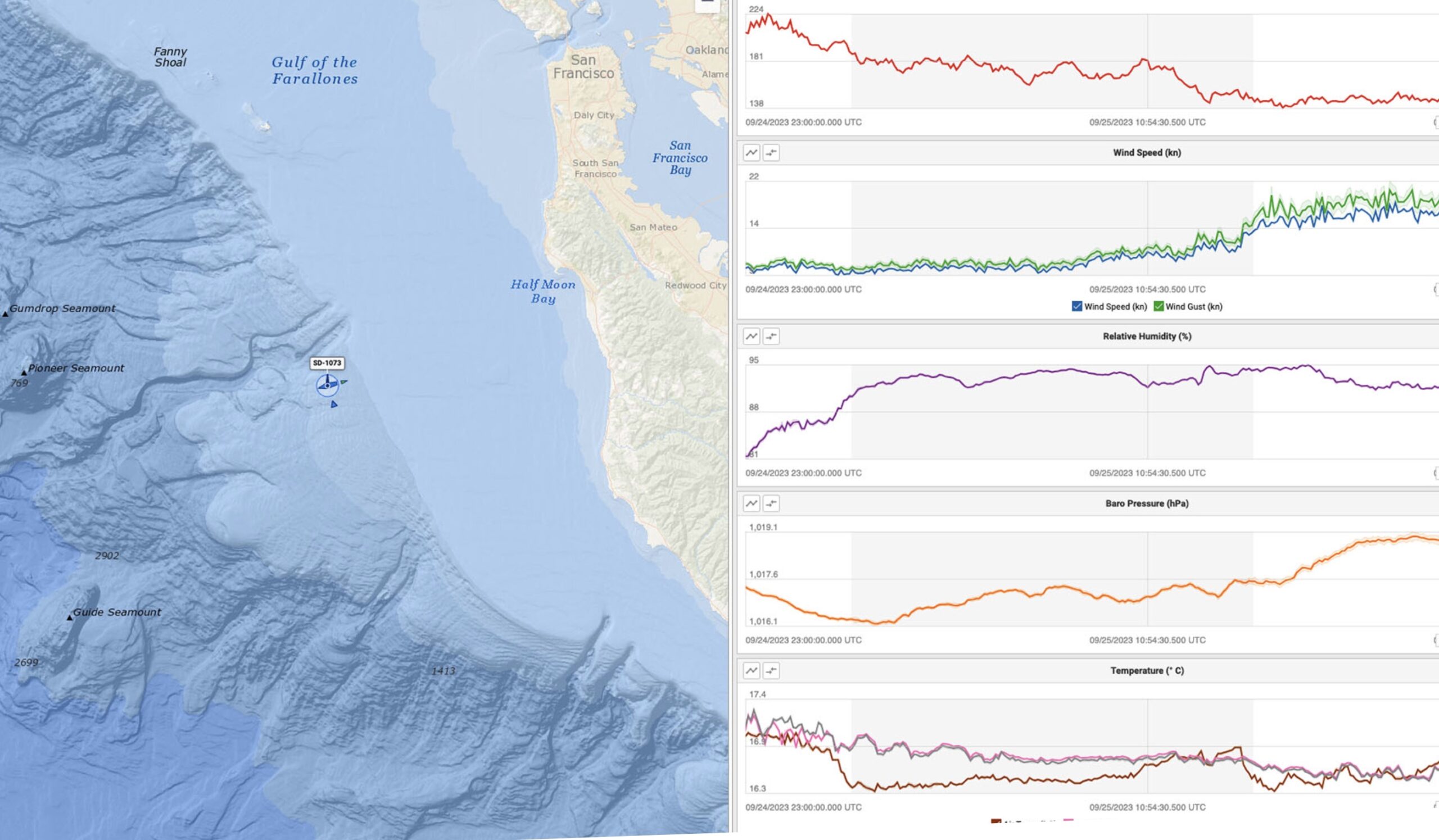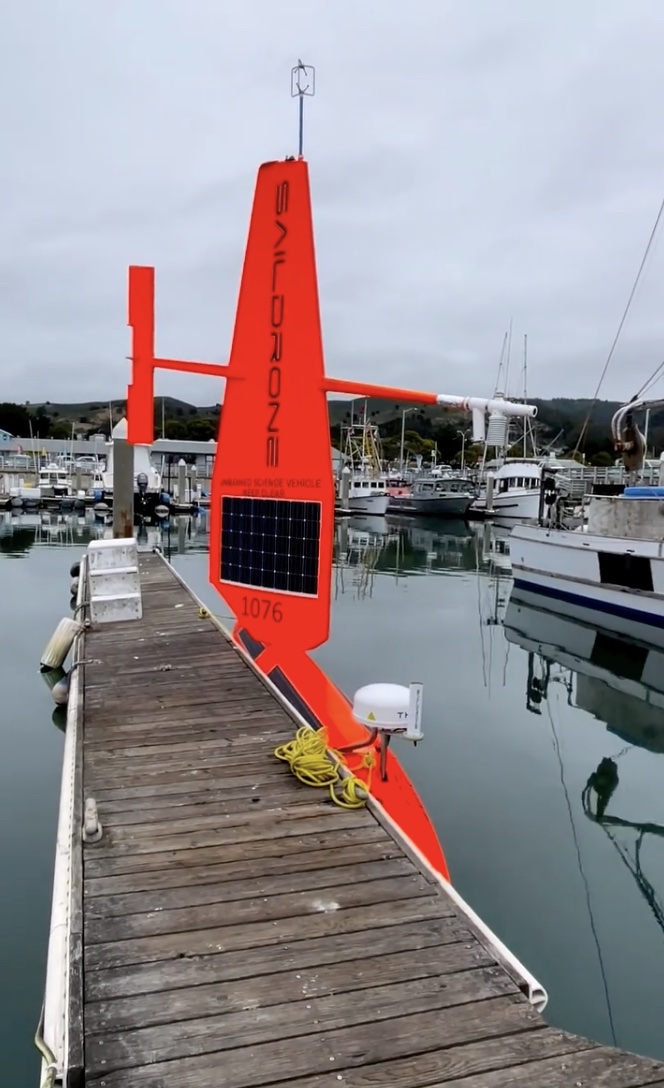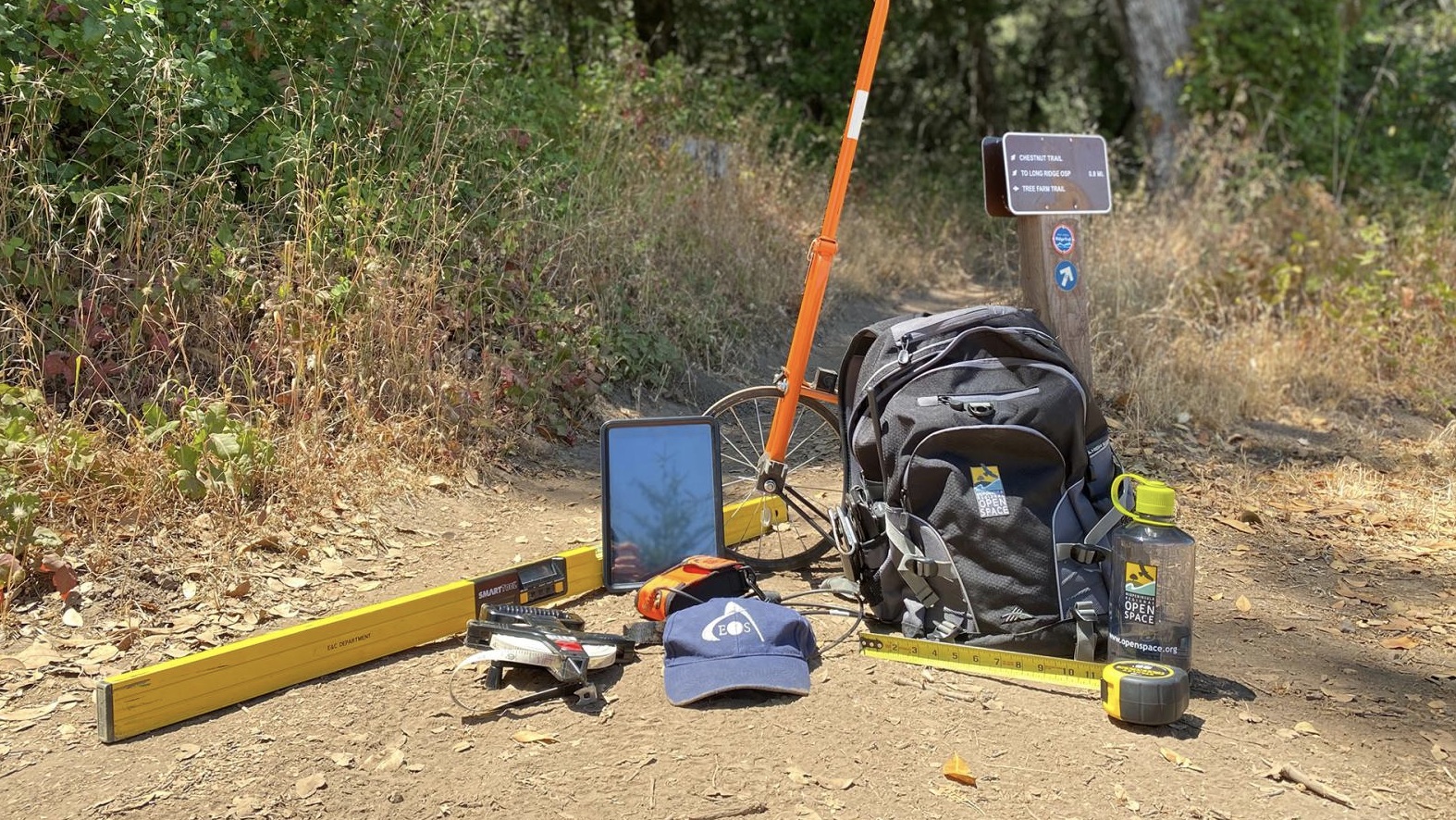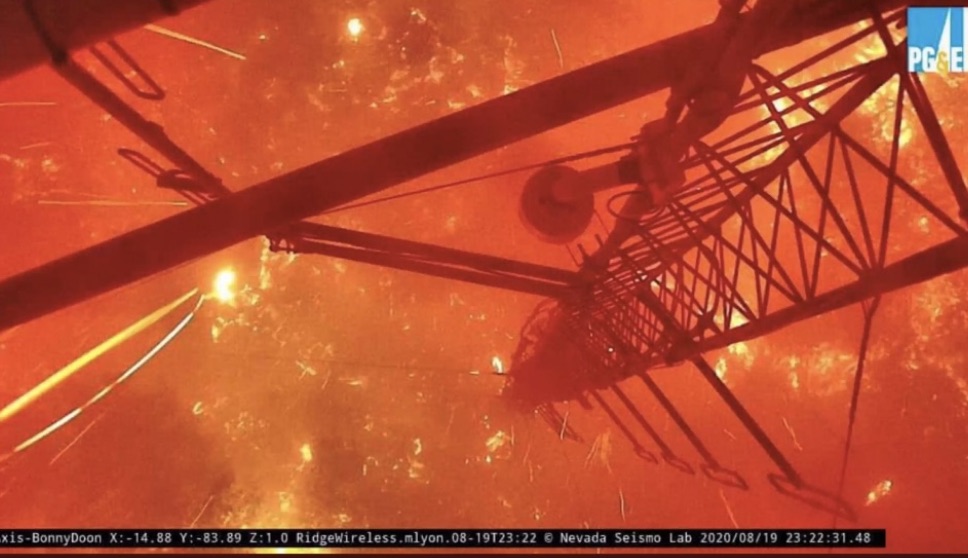|
Getting your Trinity Audio player ready...
|
PRESS RELEASE. From Saildrone on September 26, 2023.
Weather Buoy Swapped for Saildrone to Protect Seafloor
The National Data Buoy Center has replaced a moored weather buoy in a national marine sanctuary with a Saildrone USV to mitigate impacts caused by mooring material.
Weather buoys are one of the many tools that the National Oceanic and Atmospheric Administration uses to collect environmental observations to monitor Earth’s oceans and coasts, predict changes in weather and climate, sustainably manage ocean resources, and protect coastal communities. NOAA’s National Data Buoy Center (NDBC) operates more than 200 moored weather buoys around the globe. They provide data for scientists to study the loss of sea ice in the Bering Sea, the impacts of ocean acidification on Florida’s coral reefs, and monitor the health of the Great Lakes.
Moored weather buoys are both expensive and difficult to maintain—when outages occur, repairing them requires large, crewed ships and weeks at sea—and the moorings can impact fragile sea floor.
Now, the NDBC has replaced one of its coastal weather buoys with a Saildrone uncrewed surface vehicle (USV). Saildrone delivers a similar set of meteorological and oceanographic data to that of weather buoys: wind speed and direction, air temperature, relative humidity, barometric pressure, sea surface temperature, significant wave height, and wave period, but Saildrone USVs don’t require a mooring to stay in place, and in fact, can transit to the area of operation autonomously.

“This exciting partnership with Saildrone ensures NOAA’s ability to maintain observations in areas that are critical for weather and marine forecasts. NDBC has operated a moored weather buoy southwest of San Francisco since 1980, and NWS forecasters and the public have come to depend on these reliable observations. Through this partnership, we can now maintain these observations while mitigating the deployment of mooring and anchor material in our important national marine sanctuaries,” said Dr. William Burnett, NDBC director.
Station 40612, part of NDBC’s Coastal Weather Buoy observing system, was moored 24 nautical miles south-southwest of San Francisco off the coast of Half Moon Bay in Monterey Bay National Marine Sanctuary. With storms approaching the coast, it is known as a critical area for the National Weather Service; however, it was moored in an area with delicate coral on the seafloor. The defunct buoy has been completely removed, and the NDBC wanted to replace the buoy in an environmentally sustainable way.
The 23-foot Saildrones Explorer, powered exclusively by renewable energy, is designed for long-range data collection in the toughest ocean environments. They can stay on station for months at a time and sail autonomously to port for regular service as another vehicle arrives to take its place.
“NDBC performs an important role in the monitoring and prediction of global weather patterns, and we are proud to be a part of their network, collecting vital weather data without impacting the marine ecosystem and zero operational carbon footprint,” said Cristina Castillo, Saildrone senior program manager for ocean data missions.
Deployed in August, Saildrone Explorer SD 1073 has been on station delivering data since September 1 and is expected to remain on station through June 2024.
Data from Saildrone Explorer SD 1073 can be viewed on the NDBC website as Station 1801589.
The data is being provided to the National Weather Service via the NWS Telecommunications Gateway. It will be ingested into the National Centers for Environmental Prediction (NCEP) and provided to the rest of the world via the Global Telecommunication System (GTS). The project is one of nine uncrewed marine system public-private partnerships supported by $7.5 million from NOAA’s Uncrewed Systems Operations Center allocated in fiscal year 2023.
“Uncrewed systems are an increasingly important tool to support NOAA’s mission of understanding and predicting changes in climate, weather, the ocean and coasts, and conserving and managing coastal and marine ecosystems and resources,” said NOAA Corps Captain William Mowitt, director of the NOAA Uncrewed Systems Operations Center. “By partnering with the private sector in this new way, we can not only collect data more efficiently but also support innovation and America’s new blue economy.”
This is the second time Saildrone has replaced buoys for the NDBC. In 2022, two Saildrone Explorers were deployed to the Gulf of Mexico to provide data near two buoys experiencing critical outages.
Resources
NOAA National Data Buoy Center, “NDBC Replaces Weather Buoy with Saildrone USV in National Marine Sanctuary,” press release, ndbc.noaa.gov, Sept. 26, 2023
NOAA Office of Marine and Aviation Operations, “NOAA Announces $7.5 Million in Uncrewed Marine System Public-Private Partnerships,” press release, omao.noaa.gov, March 9, 2023


